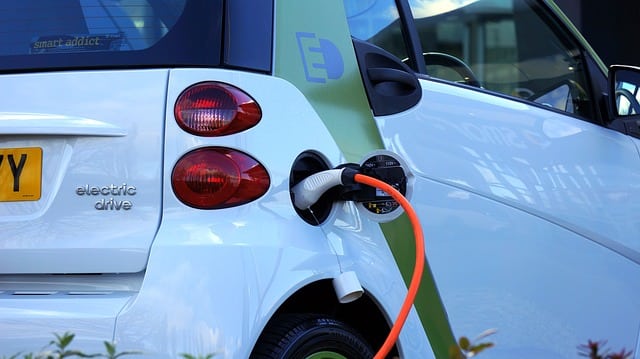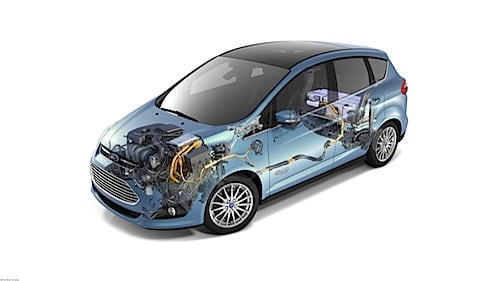Electric cars seem to be gaining more popularity by the minute: more than 325,000 preorders for the new Tesla motors Model 3 electric car have been put in, even though it won’t be available for at least six more months. This means that around 340,000 electric vehicles and plug-in hybrids will now be cruising U.S. roads. According to Tesla Motors, their electric vehicles produce zero emissions and are ideal for helping the environment, however, this is not necessarily true.
It’s true that the electric car itself doesn’t produce any emissions, but the power plant that produces the electricity used to charge the battery in the car, most likely does. Low emissions can only happen in certain places where the majority of electricity is generated from a mix of low carbon sources like the sun, wind or nuclear reactors.
Electric cars are pretty good at eliminating oil from transportation, but they might not help America combat climate change as we all thought – it all depends on how the electricity is created.
Gasoline powered vehicles such as cars and trucks are accountable for around 24% of U.S. greenhouse gas pollution – at roughly 1.7 billion metric tons per year. These emissions come from hundreds of millions of tailpipes, which makes this particular source of pollution challenging to control. Changing to hundreds of smokestacks at power plants that create electricity to charge electric cars may seem like a more feasible way to control pollution. Nonetheless, all those smokestacks, many of them attached to power plants, represent the single greatest source of gas pollution in America, producing 2 billion metric tons of CO2 each year. This source would grow exponentially as electric cars demand more electricity every day. To manage pollution, strict controls should be placed on power plants or, they could shift to less polluting power sources, such as solar.
Today, a normal Toyota Prius hybrid vehicle, which uses gasoline when its batteries are out, and the all – electric Nissan Leaf, produce approximately the same amount of greenhouse gas pollution: 200 grams per mile, according to data from the U.S. Department of Energy. This is standard across the U.S.
In California, which is a state with one of the highest proportions of clean electricity in America, the same electric car would produce only 100 grams per mile, half of what the hybrid produces. It also seems like buying electric cars in California is a hot trend right now.
I also conducted some additional research to find out if it’s better to buy a new or used electric car. When it comes to depreciation, buying a used car is definitely the way to go. The problem with cars nowadays is how much money you lose the second you buy one. When you go to a dealership and buy a new car, you are instantly losing about 10% of the car’s value when you drive it off the lot. This means that on top of your green car not being as green as you think, you are actually throwing money away as soon as you buy it. The funny thing about electric cars is that they lose value much quicker than regular gas-powered cars. This is due to the fact that electric cars have technology in them that is constantly evolving. Each time a new electric car is developed, its previous version becomes obsolete almost immediately. This, in turn, adds even more pollution to the world as a whole because most people won’t look to buy one of these used cars.
In the Midwest and South, where coal fuels take on the majority of electricity production, a hybrid produces less CO2 than an electric car. In Minnesota, a fossil-fuel production dependent state, an electric car would emit 300 grams per mile of greenhouse gasses. Researchers have concluded, based on these stats, that a regional approach to clean vehicle standards is more sensible than a national approach. Minnesota could focus on hybrids while California could go for electric cars, as they have been doing thus far.
The same principle applies worldwide. For example, in China, driving an electric car is a calamity for climate change because, in this country, coal is by far the largest power plant fuel. Even more so if the plant lacks pollution controls or fails to make use of them. The same happens in major coal-burning countries like Australia, India and South Africa.
We do have some good news though, the U.S is trying to make major changes in electricity production. The goal is to switch from burning coal to using cleaner natural gas as a producer of the majority of electricity in the country. This change would produce less CO2, making electric cars cleaner all over the country. Anyhow, the primary component of natural gas, methane, is itself a potent greenhouse gas. Which means that if there are methane leaks from the walls where it is being used, the climate doesn’t really benefit.
To sum up, electric cars are only as green as the electricity used to charge them. If the source used to produce energy is coal based, the electric car will probably pollute just as much as any other car. But, if the energy is cleaner, using natural gas or solar power, the electric car probably will emit less greenhouse gasses, not zero. So, maybe it’s time we look at different ways we can make the cars we already have more environmentally friendly. It would definitely be a lot cheaper. What is your take on electric cars? Let us know in the comments below!







